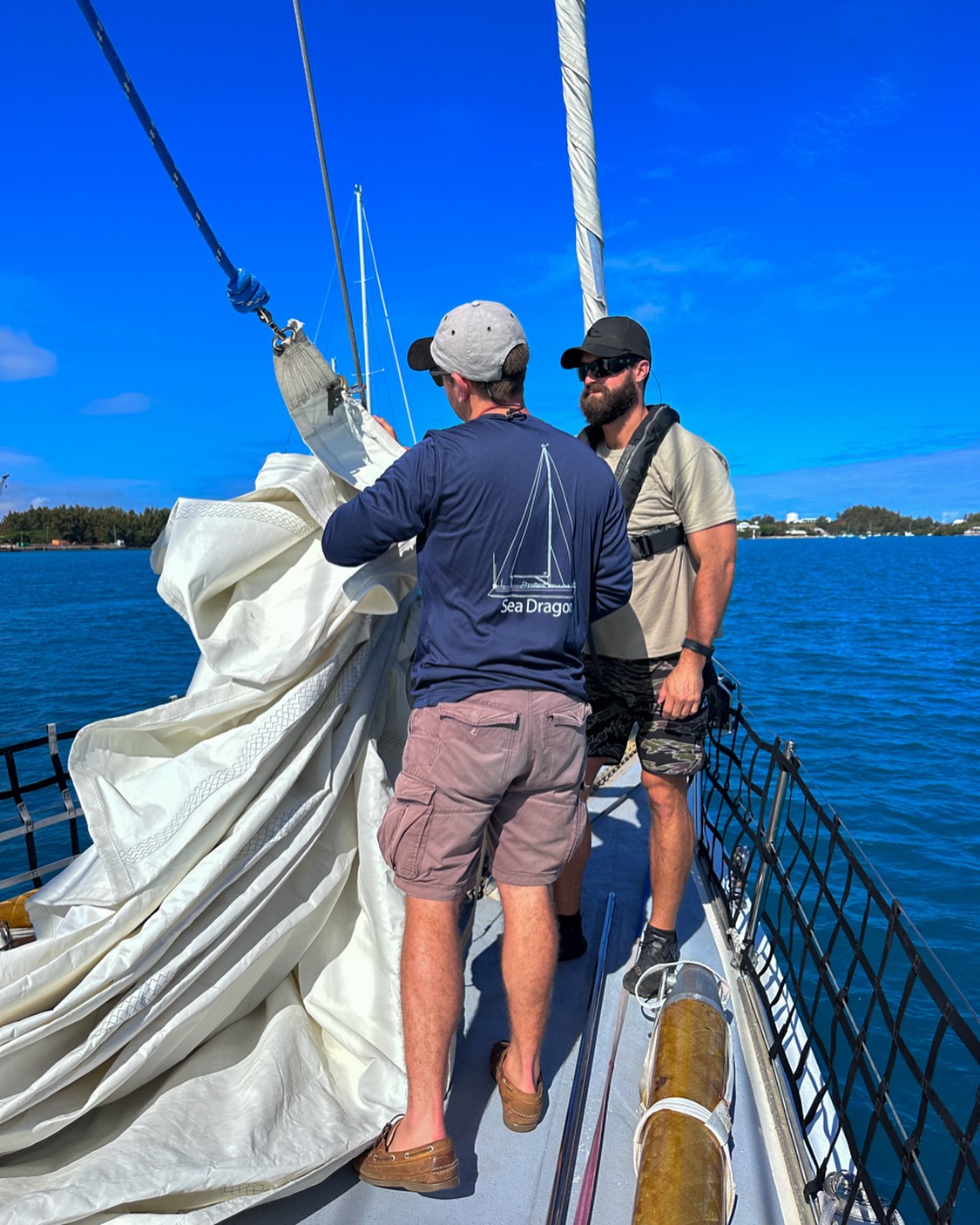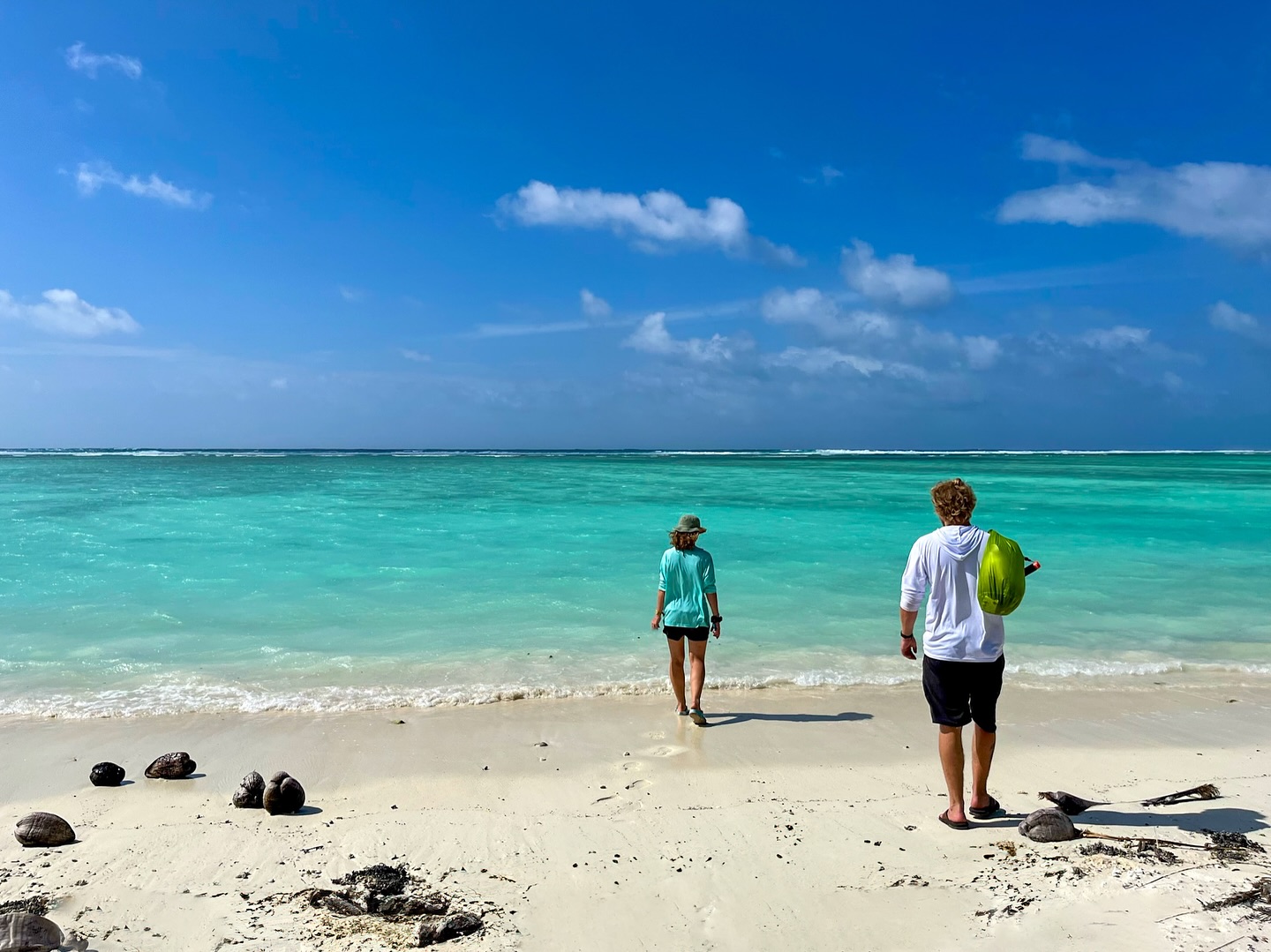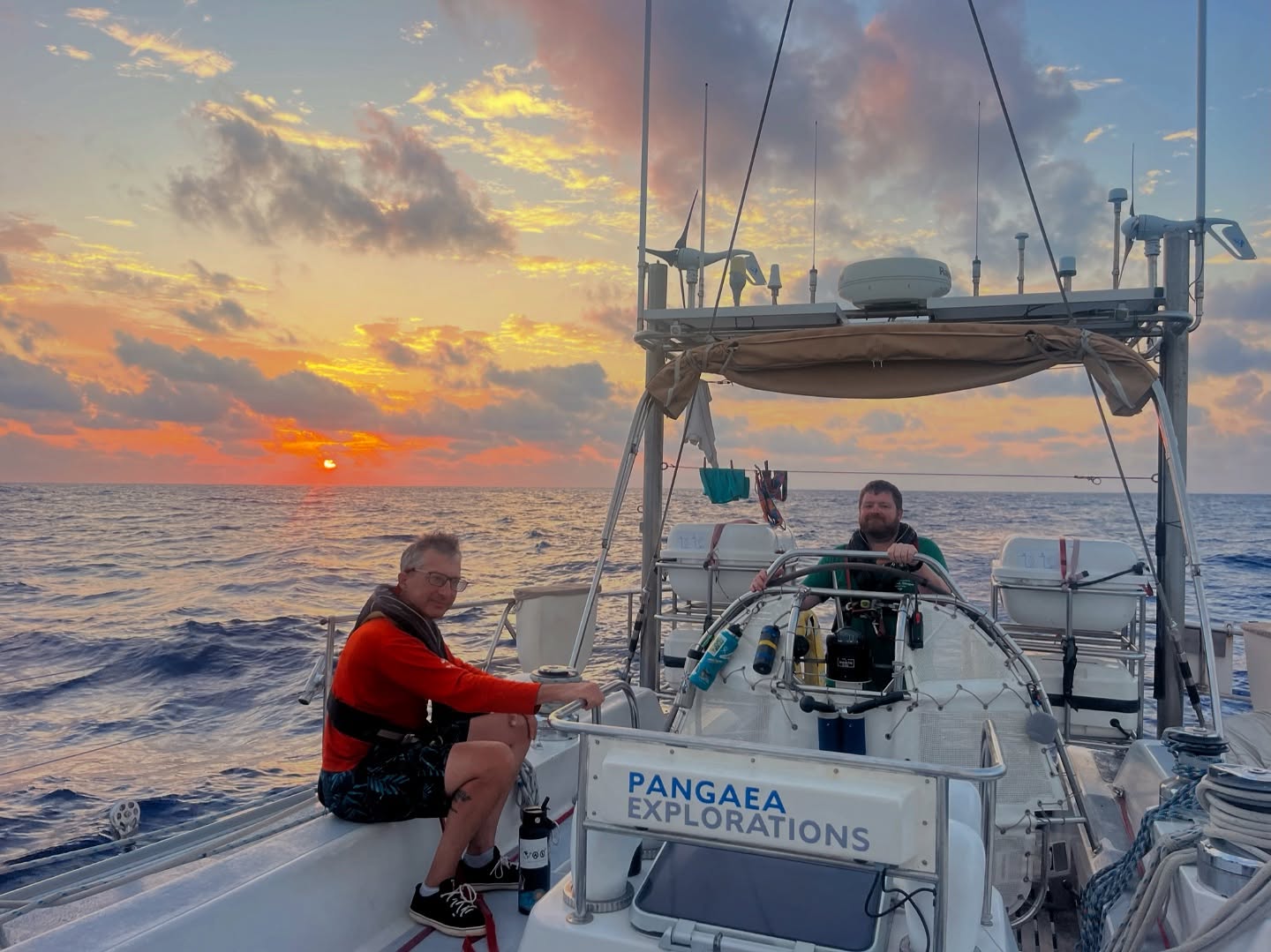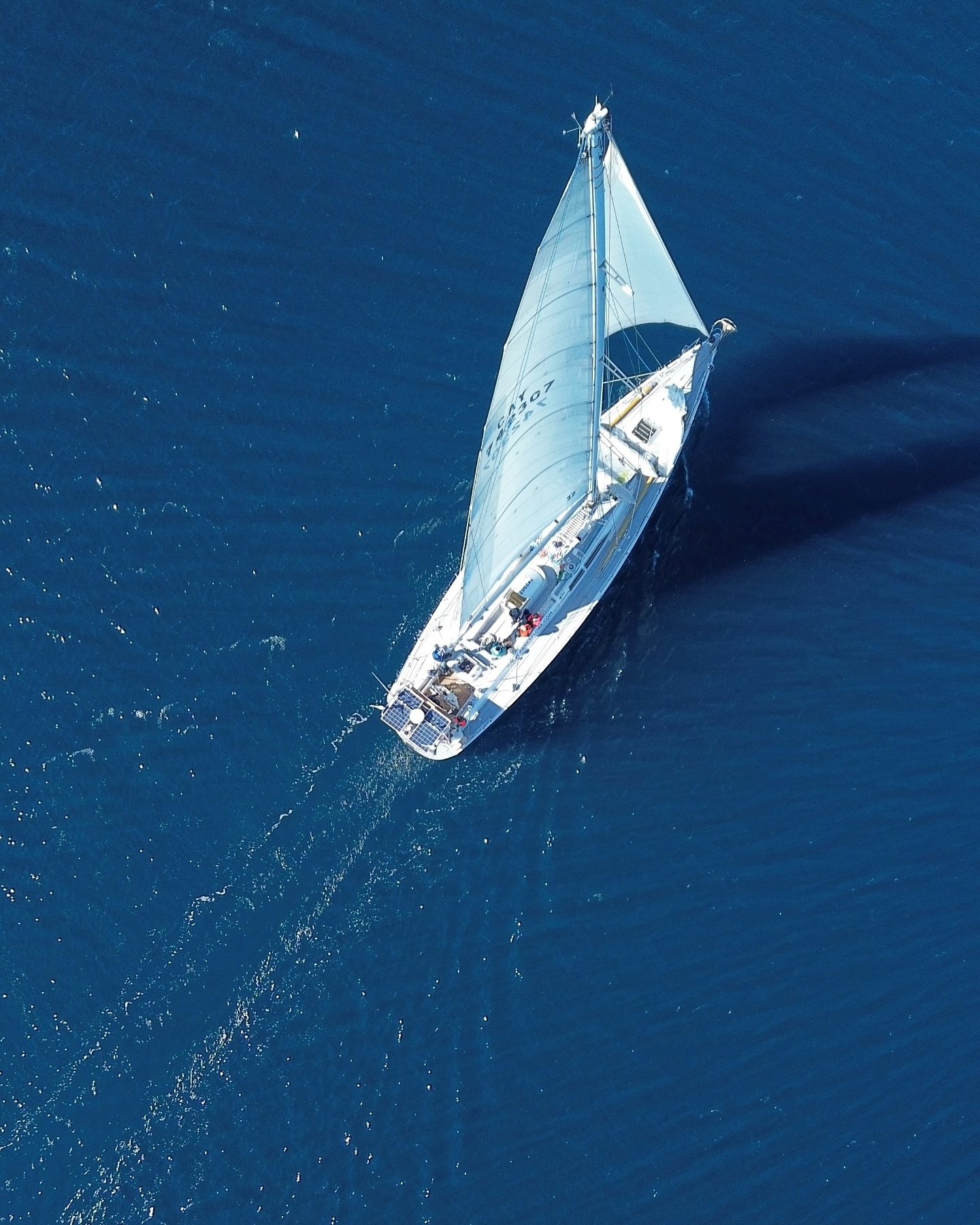And so passes another day aboard Sea Dragon. We’ve been at sea now for 36 hours and it’s been a wonderful start to the cruise. Having been aboard her as the resident scientist last year I had a good idea of what to expect, but every trip to sea brings new challenges and ways of thinking, and it has been great to get going and to take these challenges in our stride.
We began the science an hour or so after leaving port in Horta, on the island of Faial, and were immediately stunned. The science involves deploying a plankton net off the side of Sea Dragon and towing it through the surface water for 20 minutes. In doing so, we collect anything in the top 50cm of water; the home of one of the most important, and certainly the most abundant, group of animals alive; the plankton. The plankton are not defined by their shape or size, per se, but are a motley crew of plants (phytoplankton) and animals (zooplankton) that are carried by ocean currents, rather than being able to travel great distances on their own. The aforementioned plants store more carbon and release more oxygen than all of the world’s forests combined, and a copepod, one the of the zooplankton, is the most abundant animal on earth. If you gathered them all together, they would fill over 80 million Olympic size swimming pools, and if you placed them end to end, they would stretch to the moon and back 87 million times!
In amongst this plankton soup of vibrant and charismatic plants and animals lurks a danger, however. As the plankton are driven by ocean currents, they cannot avoid what lies in wait for them, and with respect to this cruise and our science at the University of Exeter, we’re talking about plastic pollution; specifically microplastics. A microplastic is any piece of plastic less than 5mm across, which makes it what we term ‘bioavailable’ to the food web, .i.e. it can be ingested. These microplastics are formed when larger pieces of plastic break down through the combination of sunlight and wave action into smaller and smaller pieces or, indeed, are manufactured at that size, like the exfoliating beads in face scrubs we are hearing much about at the moment.
Our research is looking in to how the presence of microplastics affect these all-important zooplankton as, if they are feeding on plastic instead of their normal food, then this could have far-reaching, global consequences for life on Earth.
So back to our trawl…the nets went in to the water, and as we drifted along at our sampling speed, we saw dolphins and seabirds feeding, fish schooling near the surface, the lush green islands of the Azores, a picture of nature at its finest. However, in our very first trawl on Saturday, we pulled in the net, and as already mentioned, we were stunned at what we found. By eye, we counted 55 pieces of likely plastics (they need to be tested in a lab to be sure), ranging in size from 1cm across to less than a millimeter, and all of this collected in 20 minutes with a small net in a vast, vast ocean. These two points seemed totally incongruous; the beauty and poetry of life in our seas and oceans, and the mess that man has left behind. Whilst we enjoyed the very best of nature; watching the dolphins feeding, they were doubtlessly snacking on the very worst of man’s excess as they went about catching their lunch.
It was a harsh and startling reality to be faced with. I met up with Dr Chris Pham from the University of the Azores on Faial, and we spoke at length on the plastic pollution problem. The beaches in Faial are, for lack of a better word, littered with plastic debris. Given the number of residents and the volume of tourism, it is safe to say this isn’t just careless waste management on the Azoreans behalf. When we looked closely in some of the beach sands, we found mermaids tears; the pre-production plastic pellets used by the plastic industry to make plastic products. Given that there are no businesses producing plastic products in this manner on Faial or any of the Azorean Archipelago, these plastic beads can only have come by sea, and that sets the sad state of affairs that we find ourselves in today and why were traveling 1000 nautical miles to try and understand the scale of the issue out to sea.
The latest estimate of plastics afloat in our seas and oceans is put at 5.25 trillion pieces, weighing in at 250,000 tonnes. That, coupled with the fact that over 260 marine related species are known to be ingesting plastics from our oceans, and well documented evidence on the impacts of this ingestion on a wide variety of marine animals including zooplankton, makes man’s legacy a dirty one.
However, it is not too late! We can change things. What we do about the plastic afloat at sea remains to be seen, but encouraging efforts such as plastic bag taxes and the growth in home recycling means that we are making progress. Through efforts by innumerable companies (two of whom are represented on board – check out ‘Oath UK’ for bamboo skateboards and recycled EPS surfboards, and the recently-launched ‘Heroes of Nowhere,’ making a recycled marine plastic backpack) seeking to produce products with a better environmental legacy, we are making strides to improve the future of our planet. Last year, we were shown that living plastic free was possible by the people at Plastic Free July.
There are many initiatives and programs seeking to do good, but it is timely and useful to be confronted with the stark reality of our wasteful nature in order to inspire further, and more lasting change. Without the plankton, we would find ourselves in a sorry state…as they say, ‘little things keep a kingdom running,’ so don’t forget our friends and co-laborers in life on Earth, and bear them in mind when taking your recycling bag out to the bin on a rainy day hardly seems worth it. You’re protecting the future of life on Earth as we know it, which is, after all, our home as well!
– Adam Porter, Mission Leader, Gyre to Gaia II, August 1, 2015






























